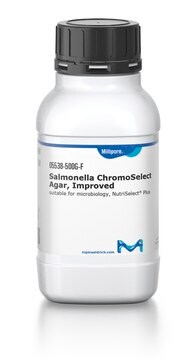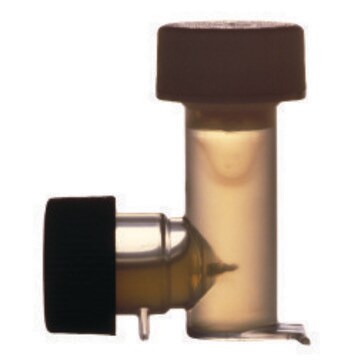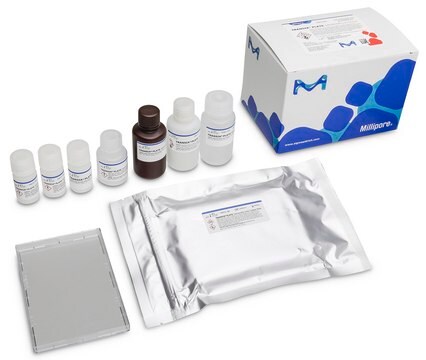55662
Hybriscan™ D kit
Salmonella, suitable for food and beverages, microbiology and in situ hybriziation
Synonym(s):
Salmonella HybriScan™D, FastScan Salmonella
About This Item
Recommended Products
Product Name
HybriScan™D Salmonella, suitable for microbiology
technique(s)
microbe id | in situ hybriziation: suitable
Quality Level
application(s)
food and beverages
microbiology
storage temp.
2-8°C
suitability
Salmonella spp.
General description
Features and Benefits
Legal Information
Signal Word
Danger
Hazard Statements
Precautionary Statements
Hazard Classifications
Acute Tox. 3 Inhalation - Acute Tox. 4 Dermal - Acute Tox. 4 Oral - Carc. 1B - Eye Dam. 1 - Met. Corr. 1 - Muta. 2 - Resp. Sens. 1 - Skin Corr. 1A - Skin Sens. 1 - STOT SE 3
Target Organs
Respiratory system
Storage Class Code
6.1C - Combustible acute toxic Cat.3 / toxic compounds or compounds which causing chronic effects
Flash Point(F)
Not applicable
Flash Point(C)
Not applicable
Choose from one of the most recent versions:
Certificates of Analysis (COA)
Sorry, we don't have COAs for this product available online at this time.
If you need assistance, please contact Customer Support.
Already Own This Product?
Find documentation for the products that you have recently purchased in the Document Library.
Articles
Salmonella contamination is the second leading cause of food-borne illness worldwide. Controlling outbreaks of Salmonella is an important task for food regulators, restaurants and the food industry in general. The Salmonella family includes over 2,300 serotypes of bacteria, but two types, Salmonella enteritidis and Salmonella typhimurium, are responsible for about half of all human infections. Most outbreaks of Salmonella are traced back to dairy, poultry and meat products, but Salmonella can grow on nearly any food. Chicken, eggs and their derivative products are particularly high risk.
Protocols
Food-borne pathogens Salmonella is commonly evaluated in manufacturing of peanut butter and other food products.
Related Content
Fast molecular screening of beverage, water, wastewater and food for microorganisms
Our team of scientists has experience in all areas of research including Life Science, Material Science, Chemical Synthesis, Chromatography, Analytical and many others.
Contact Technical Service









